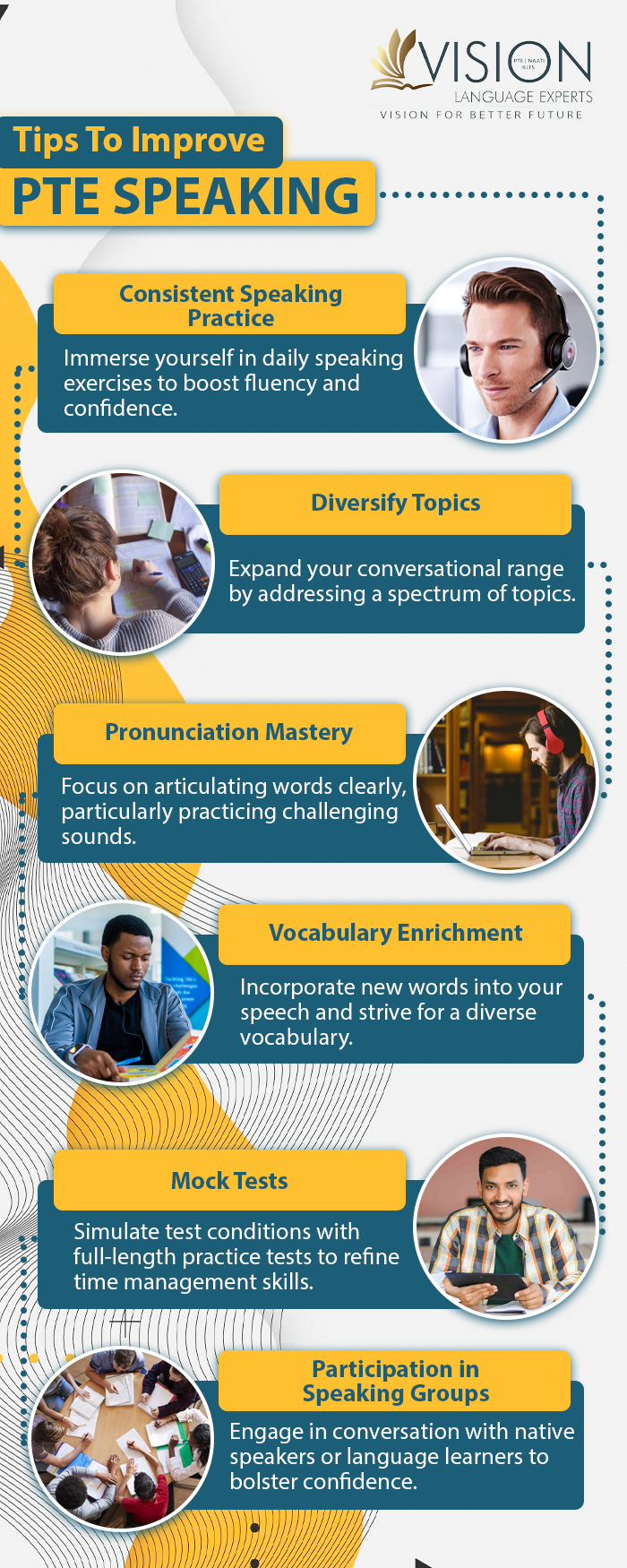When it comes to the PTE (Pearson Test of English) Speaking section, many test-takers find themselves grappling with common mistakes that can hinder their performance. In this blog, we’ll explore some of these pitfalls and provide valuable insights on how to sidestep them. Whether you’re a seasoned PTE candidate or just getting started, mastering these speaking challenges can make a significant difference in your test results.
Speaking Too Fast
One prevalent mistake test-takers make is speaking too rapidly. The pressure of timed assessments can lead to hurried responses, resulting in unclear pronunciation and reduced coherence. To avoid this, practice speaking at a moderate pace during your PTE classes. Emphasize clarity over speed, allowing your words to flow smoothly without sacrificing enunciation.
Neglecting Pronunciation
Accurate pronunciation is a key component of the PTE Speaking section. Mispronouncing words can lead to misunderstandings and negatively impact your overall score. Take advantage of online pronunciation tools or seek guidance from your PTE classes to enhance your articulation. Regular practice, both in and out of the classroom, is crucial for refining your pronunciation skills.
Lack of Pauses and Intonation
Another common mistake is the absence of appropriate pauses and intonation. Speaking in a monotonous tone can make your responses sound robotic and less engaging. PTE assessors look for natural, varied speech patterns. Practice incorporating pauses for emphasis and work on your intonation to convey meaning effectively. Enroll in PTE classes that focus on developing these aspects of spoken English.
Overusing Fillers
Fillers such as “um,” “uh,” or “like” are often used when test-takers are unsure or searching for words. While occasional use is acceptable, excessive reliance on fillers can convey a lack of fluency and impact your score. Practice responding to prompts without relying on unnecessary fillers. PTE classes can provide valuable feedback on reducing filler usage while maintaining coherence.
Ignoring the Repeated Sentence Task
The Repeated Sentence task requires candidates to listen to a sentence and repeat it accurately. Surprisingly, some test-takers underestimate the importance of this seemingly straightforward task. Neglecting proper attention to detail can result in errors and impact your overall score. To excel in this task, actively listen, and practice repeating sentences with precision during your PTE classes.
Failure to Follow Instructions
Carefully reading and following instructions is crucial in the PTE Speaking section. Some test-takers lose valuable points by not adhering to the specified task requirements. Whether it’s providing a short answer or elaborating on a topic, be attentive to instructions. Participating in PTE classes that simulate real test scenarios can help you become accustomed to the format and practice following instructions accurately.
Limited Vocabulary
A restricted vocabulary can hinder your ability to express ideas clearly and concisely. PTE assessors are looking for a broad range of vocabulary in responses. To overcome this challenge, build your vocabulary through regular reading, word lists, and vocabulary-building exercises provided in your PTE classes. Practice incorporating new words into your spoken responses to showcase your linguistic prowess.
Underestimating Fluency and Coherence
The PTE Speaking section evaluates not only what you say but also how you say it. Test-takers often focus solely on content and neglect fluency and coherence. Work on connecting ideas smoothly, using linking words, and structuring your responses logically. Engaging in conversations, both inside and outside your PTE classes, can significantly enhance your ability to speak fluently and coherently.
Conclusion
In the journey to mastering the PTE Speaking section, avoiding common mistakes is as crucial as mastering the content. From pacing and pronunciation to following instructions and expanding your vocabulary, each aspect plays a vital role in your overall performance. Engaging in dedicated PTE classes, practicing regularly, and learning from your mistakes are key strategies to overcome these challenges. By addressing these common pitfalls head-on, you’ll be better equipped to showcase your English proficiency and achieve success in the PTE Speaking test.





